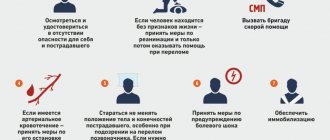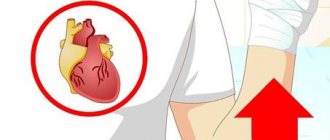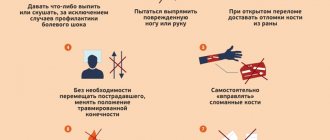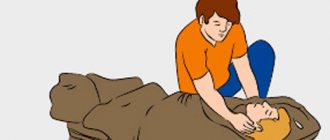INSECT BITES. HOW TO AVOID CONSEQUENCES
03.Jun.2020
The human body responds to an insect bite with three types of reactions.
Local reaction - redness, swelling, pain, itching or severe burning in the affected area, local enlargement of the lymph nodes. General toxic reaction - chills, increased body temperature, nausea and vomiting. Headache and joint pain usually occur with multiple bites.
In general, bites can be conditionally divided into two large groups: bites of hymenoptera (mosquitoes, midges, bees, wasps, hornets, horseflies, etc.) and arachnids (tarantulas, scorpions, ticks). Webbed bites
Mosquitoes, midges, and horseflies do not have poisonous glands, and when they bite, a special substance is injected into the wound to prevent blood clotting.
The reaction to such bites is usually only local. A person is able to endure multiple bites of these insects (up to 100 or more) without disturbing the general condition. To reduce local manifestations, experts advise wiping the affected areas of the skin with water and dry soda (alternately dipping your finger in water and dry soda). You can also apply a “strong” soda solution to the bite sites. Menovazin has a good analgesic and antipruritic effect, but this product should not be used by people with hypersensitivity to novocaine. The “Star” balm helps some people well. To prevent infection, the bitten areas can be lubricated with brilliant green. Folk remedies recommend using grated new potatoes, crushed onion or garlic gruel, and parsley leaf juice. Special creams and lotions (“Moskitol”, “OFF”, “Taiga”, etc.), repellent aerosols, smoking coils, etc. help well in the fight against insects. Remember that all these products are toxic, so they are not recommended for children under 3 years of age and pregnant women. POISONOUS BITES Bees
, bumblebees (they sting only once in a lifetime, after which they die), wasps and hornets (can sting several times) “reward” us with poisonous bites.
These insects usually do not attack unless provoked (they often sting to protect their hive or nest). When bees or wasps sting, they inject a venom containing proteins and some other substances that can cause an allergic reaction in the victim. The local reaction to the bites of these insects is usually very pronounced. The development of significant swelling is typical, which, although it is a local reaction, can be dangerous if located on the face (especially in the lip area or inside the oral cavity). Allergic reactions to the bites of these insects are quite common. Urticaria is a rash of blisters merging with each other against a background of redness of the skin, accompanied by severe itching. Quincke's edema ("giant urticaria") is a rapidly growing, limited swelling of the skin or mucous membranes. It can occur not only directly at the site of the bite, but also at any other site. Its “favorite” localization is the face, oral mucosa, soft palate, limbs, and genitals. Allergic swelling of the larynx is especially dangerous. A rare but very dangerous reaction is anaphylactic shock. Within a few minutes, the victim develops shortness of breath, severe chills, fear of death, heart rate increases, blood pressure drops sharply and coma sets in. HELP FOR THE VICTIM
Carefully examine the bite site. The remaining sting must be removed in such a way that any remaining poison does not enter the wound. Next, cold should be applied to the bite site. For persons predisposed to allergic reactions, it is better to immediately give an antihistamine. This must also be done in case of “dangerous” bite locations (face and, especially, oral cavity). In mild cases of allergic reactions, it is also sufficient to take an antihistamine orally. "Claritin" is given 1 tablet (10 mg) or 2 tsp. syrup for children weighing more than 30 kg and adults - 0.5 tablets (5 mg) or 1 tsp. syrup for children over 2 years old weighing up to 30 kg, 0.5 tsp. syrup for children under 2 years of age. The drug is taken once a day. "Tavegil" is prescribed for adults and children over 12 years old, 1 tablet (1 mg), for children 6-12 years old - 0.5-1 tablet, for children 3-6 years old - 0.5 tablet 2 times a day. In case of severe allergic reactions (widespread urticaria with a violation of the general condition, nausea, vomiting, abdominal pain or rapidly spreading Quincke's edema), intramuscular administration of antihistamines is necessary. Do not forget! Taking any medications must be coordinated with your doctor.
Yulia Maslova, physician-therapist of the Khanty-Mansi Autonomous Okrug-Yugra “Nyagan City Clinic”
Treatment of insect allergies
In the treatment of acute allergies caused by an insect bite, glucocorticosteroids are used to reduce the manifestations of anaphylaxis. After them, antihistamine anti-allergenic drugs are prescribed, which continue to reduce the allergic reaction.
A hypoallergenic diet is also prescribed, which excludes foods that can intensify the allergic reaction - citrus fruits, coffee and chocolate.
The duration of allergy treatment depends on the degree of the disease and the patient’s condition.
#5. Fleas
Flea
Fleas are extremely unpleasant insects. We talked about them and their bites in more detail in the article Consequences of a flea bite. The attacks of these bloodsuckers are painful. Although different people experience flea attacks differently. Saliva is quite poisonous and causes irritation and itching . However, many types of parasites can exist and bite different hosts. This leads to very sad consequences, because... contributes to the transmission of many deadly diseases from animals to humans . For example, the plague.
Plague is cutaneous, pneumonic and bubonic. The most dangerous is pulmonary. A person dies within two or three days in severe agony, accompanied by coughing and pain. In addition to plague, fleas transmit typhus , melioidosis (false glanders), which affects internal organs, tularemia , worm parasites and other diseases.
What Causes a Sting Reaction?
The venom introduced into the body through a bite engages the body's immune system. Often the immediate reaction includes redness and swelling of the affected area, followed later by itching and soreness.
If a child is very sensitive to insect venom, bites can cause anaphylactic shock: constriction of the throat and difficulty breathing.
#6. Gadflies
Gadfly
Gadflies, unlike horse flies, do not feed . They have a reduced (i.e. underdeveloped) oral apparatus. Their parasitic significance lies elsewhere. They lay eggs on the skin of humans and animals. Subsequently, the hatching larvae burrow into the skin and develop there , feeding on the surrounding tissues. In one day, the parasite can make a passage 5 cm long in the skin. And in a month, one and a half to two months, one individual gnaws a “road” of about 2 meters . Here's a real horror movie in nature!
In this case, the wounds can become inflamed, fester, and bleed . Damage to the eyes by maggots is especially dangerous. This can lead to blindness. Parasites are removed through surgery . Let us say right away that the spectacle is not for the faint of heart.
Types of blood-sucking and stinging insects
Many insects bite and sting, but few do it intentionally. Most bites are relatively harmless, leaving only an itchy patch of skin.
But some insects can be carriers of serious diseases, and then the bites pose a danger to humans.
Insects that bite intentionally:
- mites;
- bedbugs;
- fleas;
- lice;
- midges;
- mosquitoes.
Many large insects will not specifically seek out prey to sting, but will bite if they feel threatened. Usually the sting of a bee or ant contains poison. When it is injected into the skin, a sensation of itching and pain occurs.
Stinging insects:
- bees;
- hornets;
- wasps;
- red forest ants.
Burner flies
No, this is not the familiar housefly, but its relative, which lives “in the wild” and feeds on the blood of warm-blooded animals, yes, including humans. The number of insects increases towards the end of summer - beginning of autumn, which is why they are also called autumn flies.
You can meet these flies everywhere in the countryside; they are synanthropes, human companions. They breed mainly in places where there are large domestic animals, laying eggs in manure or rotting plant debris.
Both males and females “bite” the fly - by rubbing the proboscis against the skin, the fly scrapes off the epidermis and, feeding on blood, simultaneously lets in poisonous saliva, causing severe irritation. Externally, the site of the bite on the skin differs little from that of a mosquito. In addition to causing painful itching, flies are mechanical carriers of staphylococcus, as well as the causative agents of anthrax, sepsis, tularemia and other diseases.
In addition to flies, wolfhart flies are also dangerous in Russia, which can lay eggs under human skin, subsequently causing myiasis.
Measures for a bite are still the same - relieving itching and swelling with the help of improvised means, an antihistamine in case of an allergic reaction, consulting a doctor in a severe case.
Means for preventing fly bites are also similar to those described above - protective clothing, mosquito nets, and the use of repellents.
Midges
This collective name hides a mass of tiny (up to 2-3 mm long) stinging dipterous insects that externally resemble miniature flies. Like mosquitoes, it is the females who “hunt” people - they need blood and lymph as a source of protein for laying eggs.
Most often, midges are found near flowing bodies of water or in places where garbage accumulates. Their activity zone is daytime, low windy weather at temperatures of 8-30°C.
Oddly enough, the consequences of a bite from this little thing are much more serious than a mosquito bite - the swelling is greater, lasts much longer and hurts more. This is due to the fact that when attacked, the midge literally chews the tissue and injects poisonous saliva, causing bleeding and swelling.
Alas, midges are also often carriers of dangerous diseases, helminth eggs, and viral infections. Enzymes from midge saliva, injected into the wound during a bite, can cause a severe allergic reaction - simulidotoxicosis, accompanied by a sharp rise in temperature, chills, headaches, and inflammation of the lymph nodes.
You can protect yourself from the abundance of midges by using tight-fitting clothing and a hat with a mosquito net (mosquito net) impregnated with repellent. In case of a bite, treat it with ammonia, any alcohol infusion, iodine or brilliant green to reduce itching. The remaining measures for a midge bite are similar to those described above for a mosquito bite.
If an allergic reaction develops, you need to take an antihistamine tablet and consult a doctor immediately.
#7. Horseflies
Horseflies
Horseflies are similar in appearance to flies. They are called that NOT because their attack causes blindness. Rather, they themselves “go blind” while they feast on the body of the victim. At least while bloodsucking they are much easier to catch . It seems that the insects have forgotten and no longer see the danger in front of them. Although physically everything remains fine with their vision.
Horseflies feed on both blood and plant sap . Their mouthparts are capable of piercing both the integument of animals and the walls of herbaceous vegetation. There are especially many of them in the taiga. Most of them are confined to the banks of rivers . Horseflies most often attack in hot, windless weather . And the hotter the better. For them this is the greatest freedom. However, there are also species of horseflies that are active in cloudy times, when the sky is covered with a dense cover of clouds.
Horseflies drink blood both from blood vessels and by licking it from the surface of the skin . Their saliva has anticoagulant properties. Therefore, it can flow freely from the wound for some time without stopping. The insect bite itself is very sensitive due to the toxic substances contained in the saliva . The most dangerous infections that parasites can transmit are anthrax and tularemia .
What are the symptoms of a dangerous bite?
Some people do not notice the insect and may not realize they have been bitten until one or more of the following symptoms appear:
- swelling;
- redness or rash;
- pain in the affected area or muscles;
- itching;
- a feeling of heat or numbness at or around the bite site;
- tingling in the affected area.
Symptoms of a severe reaction requiring immediate medical attention include:
- temperature;
- labored breathing;
- nausea or vomiting;
- muscle spasm;
- cardiopalmus;
- swelling of the lips and throat
- confusion or loss of consciousness.
If flu-like symptoms do not go away within a few days after the bite, you should contact an infectious disease specialist for additional tests.











